I thought I knew the trees around me well enough to avoid the shame of posting a wood ID question, but I found something that puzzled me. This tree is about 18 inches in diameter and probably has been down for a couple of years, so I don't have any twig or leaf data. I thought it was yellow poplar (of which I have many, you can even see some seeds from another poplar in the pix below) because the wood seemed soft and the chainsaw went through it like a hot knife through butter. Also, the growth rings are huge, especially in the center. However, it's incredibly hard to split. When I finally got a few splits I found that some of the wood had a weird purplish-green color. So is it just a yellow poplar that seems unusual because it's very mature, or could it be some other species? The photos below show the tree, the bark, a cross-section, and a purplish-green split (sitting on top of some red oak for comparison). Any thoughts?
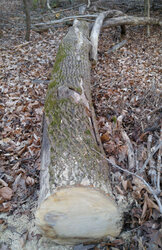
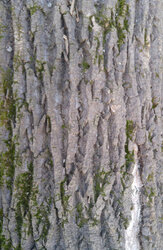
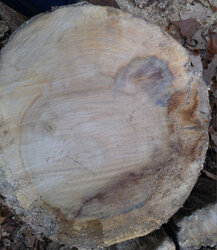
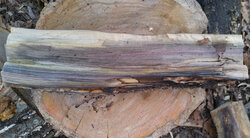







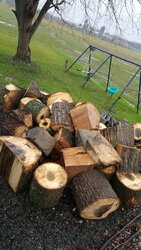
 I've tried to build good tree identification skills since I was a kid many years ago and I keep several field guides but I always do better when I have leaves to compare. For some reason I never had much luck with bark alone, maybe because the field guide pictures never seemed to match up well with reality. It also doesn't help when you get a lot of variation between different parts of the same tree, which seems to happen a lot around here.
I've tried to build good tree identification skills since I was a kid many years ago and I keep several field guides but I always do better when I have leaves to compare. For some reason I never had much luck with bark alone, maybe because the field guide pictures never seemed to match up well with reality. It also doesn't help when you get a lot of variation between different parts of the same tree, which seems to happen a lot around here.